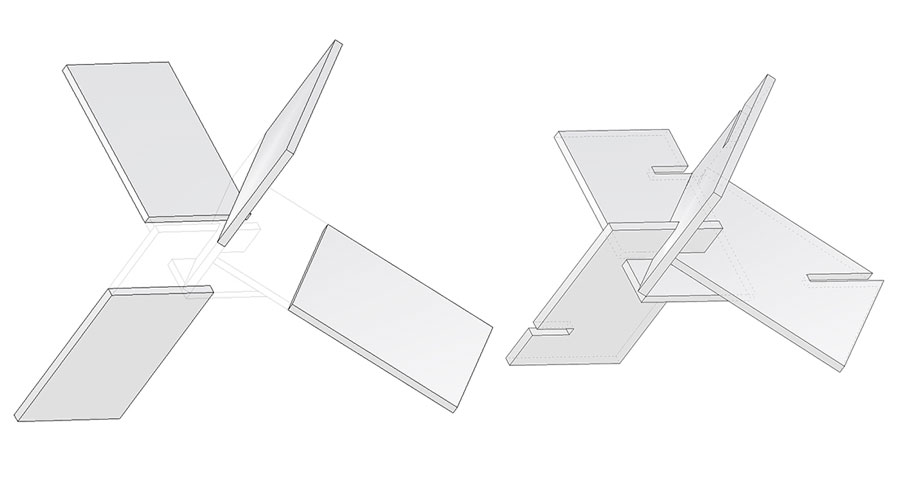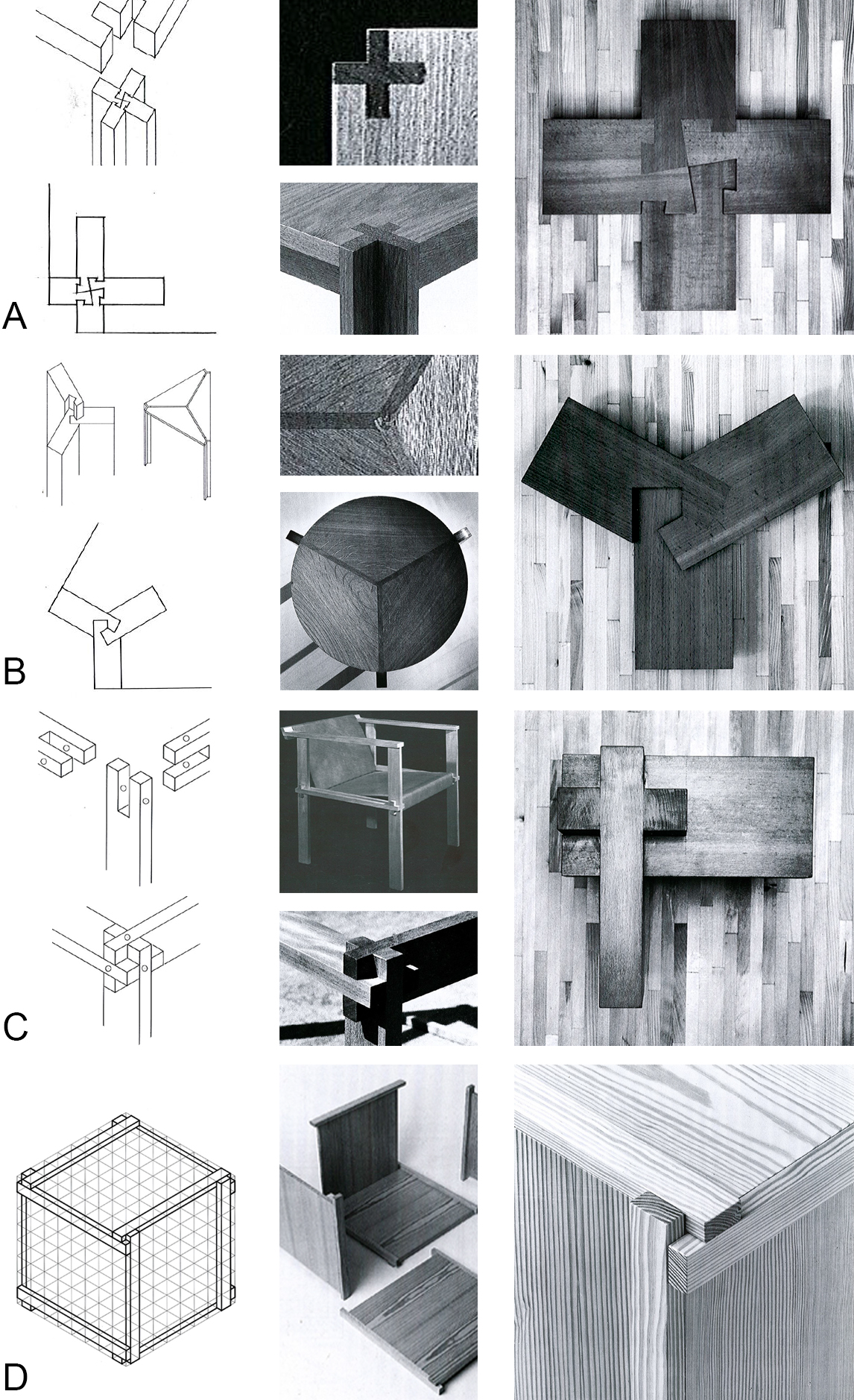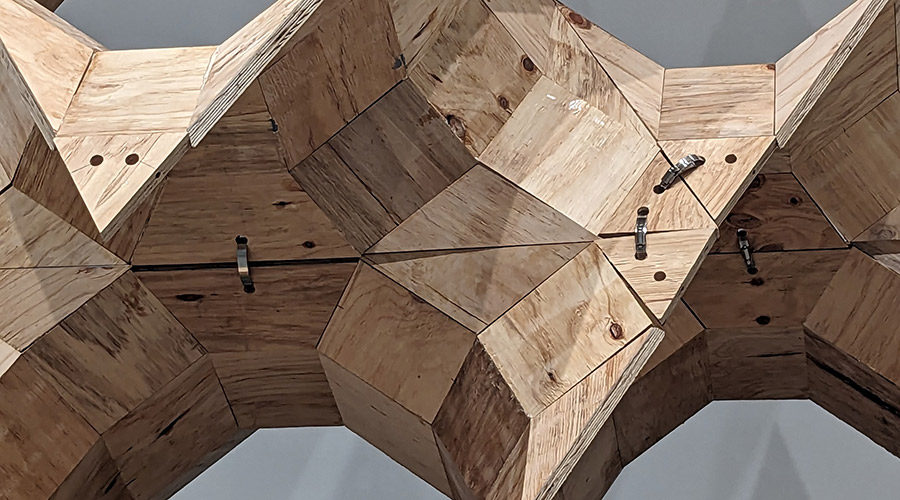This is a paper that we have recently submitted to ICSA 2013. You can read the full article on ResearchGate. Abstract below.

Reciprocal systems based on planar elements
This paper deals with the design of reciprocal spatial configurations based on the use of planar elements, which are investigated and classified according to their morphological characteristics and potential. Reciprocal structures were born as assemblies of elongated elements. In Europe, the concept of spanning distances longer than the length of the available timber beams was the key reason for the use of such structures, which were therefore called ‘short-beams’. In Orient and especially in China, the use of interwoven strips of bamboo for the construction of baskets is an old tradition that was transferred to objects of larger scale, bringing to the development of reciprocal configurations based on linear elements as well. In this framework, a study of reciprocal systems based on the use of 2D planar panels is proposed. We provide a first morphological classification of reciprocal systems based on planar elements, which have been divided according to elements’ shape and growth possibilities. Further, we highlight some research issues for future investigations. The presented systems and prototypes have been developed by the students of the École des Ponts in Paris during their Master’s degree and a workshop run by the authors in March 2012.

Configuration by Alberto Pugnale

Furniture by Werner Blaser


